
Corsair Scimitar Pro RGB Review
Manufacturer: CorsairUK price (as reviewed): £79.99 (inc VAT)
US price (as reviewed): $79.99 (ex tax)
One of the products unveiled by Corsair at CES this year was an updated version of its Scimitar mouse. The Scimitar Pro RGB follows on from the Scimitar RGB, which won Antony's favour when he reviewed it at the tail-end of 2015. The Pro version adds functionality but doesn't increase the price tag, although it's still £80 and thus very much a high-end product. There are two versions available: an all-black one, and one with a yellow side section like our review sample.
The shape of the mouse is unchanged, and this turned out to be no bad thing: I found I got on with it just as well as Antony did. You don't get full pinky support like on Mionix Naos mice, but the Scimitar Pro RGB still has a fairly wide body with proper support for your ring finger and a rubberised, textured side section that means your pinky can grip instead of drag. The body is also a little short, however, and our middle finger was left hanging over the right button in a full palm grip. Nonetheless, we quickly adapted, with a grip somewhere in between palm and claw that proved comfortable and natural over long hours.
The build quality is high and fitting for a mouse of this price. It is quite weighty, but I tend to prefer this to lighter models, and the whole unit feels robust as a result. The smooth section has a pleasant finish, while four Teflon feet make for smooth gliding that didn't appear to be hindered by the braided cable.
The wheel and buttons left me impressed too. The scroll wheel has solid, clear notches, while the buttons are all satisfying to click. The two buttons behind the scroll wheel are a little far back, but they're not out of reach or too difficult to access. Obviously, the main draw of this mouse for those interested in it will be the 12 side buttons, and these too click distinctly – haptic feedback is good all round. I also found I could grip the mouse quite tightly without worrying about pressing the side buttons accidentally.
Once again, the 12 side buttons are mounted to Corsair's Key Slider mechanism, allowing you to move the whole set through a range of 8mm so you can find the perfect position and align them with where your thumb naturally rests. This is a great idea, as these buttons are the raison d'être of this mouse, so having them as accessible as possible is important. The mouse is supplied with a small tool, and you simply turn a screw on the bottom to unlock the slider and relock it when you're done. My small hands found the furthest back position to be just right, but there's no disadvantage to having the option. I do wonder how big-handed users would fare with the rest of the mouse, especially its relatively short length, but it's hard to say.
As someone who has only ever used mice with back and forward thumb buttons, getting used to 12 took some time. However, Corsair speeds things up with sensible design. Clear gaps between the buttons and the alternating textured pattern help with physically identifying the different buttons and mapping them out in your mind.
So far, so good, but we're yet to find a difference between this new model and the older one. That's where the PMW3367 sensor comes in. Co-developed with PixArt, this optical sensor offers up to 16,000 DPI, configurable in 1 DPI steps, and a 1,000Hz maximum refresh rate. Sounds ridiculous? Well, it is, but these specs guarantee you won't be left wanting for sensitivity or customisation, even if you have a ridiculous triple 4K monitor setup or something. It also matches what Razer offers in its Mamba mice. Thankfully, it also turns out not to just be a numbers game, as the sensor is genuinely a pleasure to use. I tried it across a full range of DPI settings and wasn't able to detect built in acceleration or any unwanted effects like jitter. You don't need to spend this much to get a quality sensor, of course, but it's still an integral part of any decent mouse.
The other major change is the inclusion of onboard profile storage; just like the new K95 RGB Platinum we recently saw, the Scimitar Pro RGB can store three profiles in its internal memory, allowing you to take lighting and macro settings with you wherever you go. It's managed through software, but once saved to memory you won't need software on any PC – for some, this will be a major advantage over rival Razer, which opts for cloud-based storage and a convoluted and far from ideal process for “offline” use.
Customisation is obviously key to the success of a mouse like this, so it's thankful that the Corsair Utility Engine (CUE) software is so strong on this front. All 17 buttons can be customised, with a handy visual reference showing you what one you're changing. Custom commands are referred to as Actions, and although the interface takes a little getting used to, it's much improved over older CUE versions. Hardware-based actions include macros, text inputs, media controls, and button remaps, but you can also launch applications, set timers, and switch profiles if using software profiles, which can also be auto-launched with specific games. The macro editor is powerful and intuitive, and again you get a few more options if sticking with software-based ones.
The side buttons, front, scroll wheel, and logo have independently controlled RGB LEDs, and CUE again excels at making this process simple. There's actually a fifth RGB LED just in front of the side buttons, which makes it easy to see at a glance. Helpfully, this is used in conjunction with the DPI levels to give you a visual indicator of your current setting.
Surface calibration, angle snapping, and lift height control are all offered. With regards to the latter, each step (Low, Middle, High) represents about 1 optical disk in terms of height according to our makeshift testing. The DPI is controllable in 1 DPI increments with separate x and y axis control too. You can program up to to five separate steps per profile (six including the Sniper Mode, if used), and you can also disable unwanted steps and select a default for each profile – excellent again.
Conclusion
As you'll know from our original review, Corsair already had a very good mouse on its hands with the Scimitar RGB. The additions and changes that turn it into the Scimitar Pro RGB aren't necessary, but they are welcome. The new sensor is customisable to a ridiculous degree and performs superbly, and we think onboard profile storage is a great idea for a mouse like this too. The fact that CUE has become more user-friendly since our original review is another welcome bonus. Those that need 12 buttons under their thumb may be a rare breed, but if that's you, it's hard to see what else you might want from the Scimitar Pro RGB.

MSI MPG Velox 100R Chassis Review
October 14 2021 | 15:04

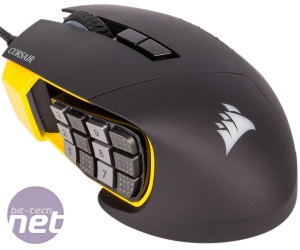
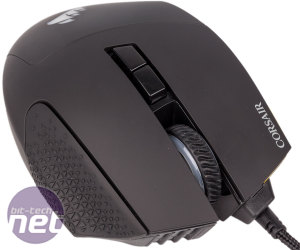

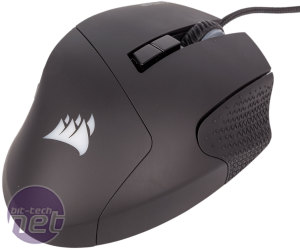
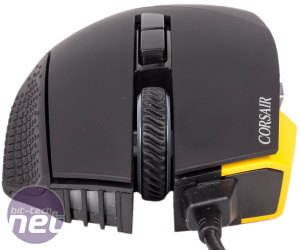
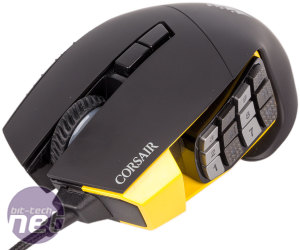




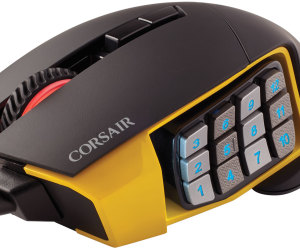
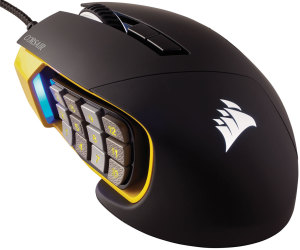
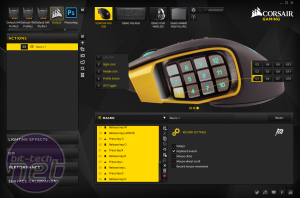
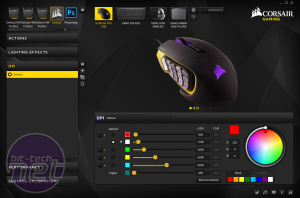
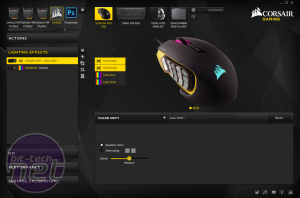
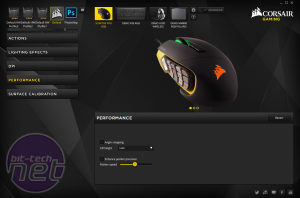







Want to comment? Please log in.